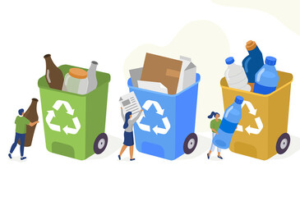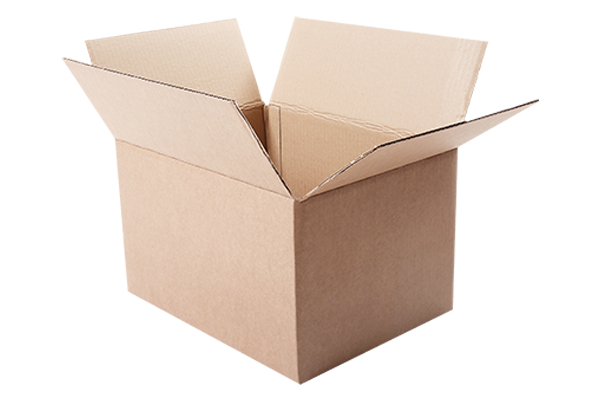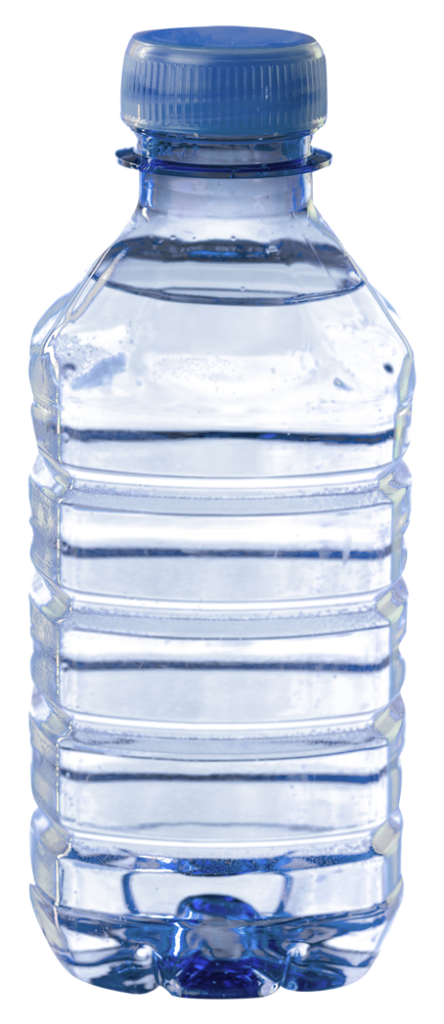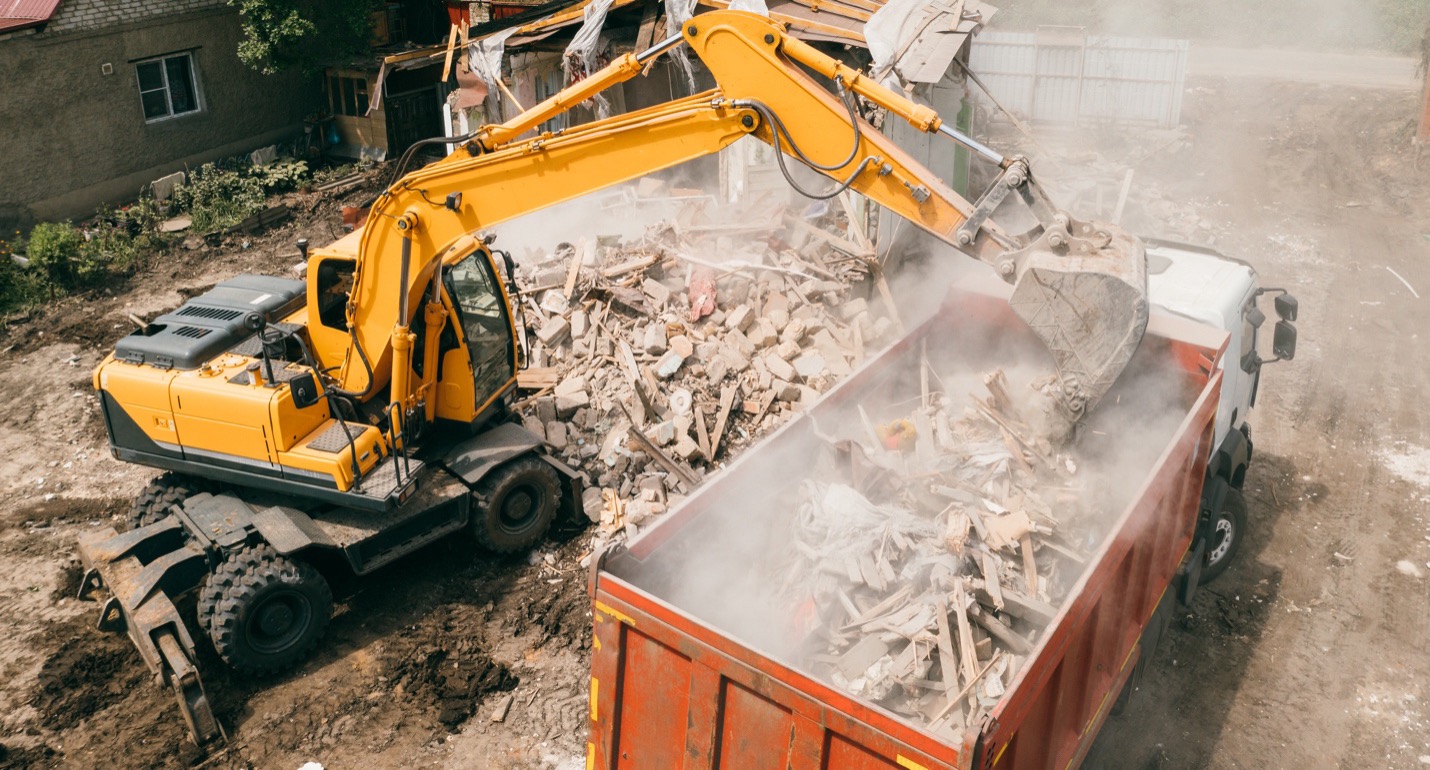In order for any product to have a market, there needs to be an established value for the item being sold. In this case we’re talking about recycled materials. Simplistically, markets work by having a buyer and a seller and this creates a supply and demand dynamic which in turn establishes a price for the market. It’s more complex than that of course, but that is the overall driving principle. Within this construct there are expenses incurred by both the seller and the buyer, so that requires some capital investment in order to make the exchange work. When supply is higher than demand, the buyer has more leverage to negotiate a lower price. When the demand is higher than supply then the opposite is true with the supplier having more leverage in pricing.
Processing: On the processing (buyer) side, materials are transported by the seller to a processing facility, such as a materials recovery facility or paper processor. At the processing facility, the recyclables are sorted, cleaned of contaminants, and prepared for transport to a milling facility or directly to a manufacturing facility. Some commodities may require more processing or additional sorting and decontamination. For example, glass and plastic are often sent to glass beneficiation plants and plastics reclaimers, respectively, where they are processed into mill-ready forms.
Remanufacturing: Notice in the above example that the processing facility will ultimately sell the results of their work to a remanufacturing facility. In that scenario the processor becomes the seller and the remanufacturer is the buyer in that transaction. After all necessary processing is completed, recyclables are made into new products at recycling plants or other facilities, such as paper mills or bottle manufacturing facilities. This illustrates that at every stage of the recycle process, value is added and pricing can be negotiated based on the current supply and demand at that stage.
There are plenty of good reasons for developing and growing the recycling infrastructure.

From the Environmental viewpoint it:
•Reduces the amount of waste sent to landfills and incinerators.
•Conserves natural resources such as trees, water and minerals.
•Prevents pollution and reduces greenhouse gases by reducing mining and processing new raw materials.
For the Economy, recycling:
•Increases economic security when using domestic sources of materials.
•Saves energy by remanufacturing.
•Reduces the cost of goods.
For Communities, recycling:
•Supports local manufacturing and conserves valuable resources.
•Create jobs in the recycling and remanufacturing industries locally.
These are just some of the ways in which recycled materials create value. Recycling is an important economic driver. As it grows and helps create jobs it also creates tax revenues. The US EPA Recycling Economic Information (REI) Report found that, in a single year, recycling and reuse activities in the United States accounted for 757,000 jobs, $36.6 billion in wages and $6.7 billion in tax revenues.
Historical Timeline
The idea of consumer recycling really started building around 1960 due to environmental concerns caused by high-profile oil spills, acid rain and damage caused by environmental poisons like DDT. During the period from 1960 to 2005, the US went from virtually no recycling to recycling about 35% of the waste that we produced through a dual stream strategy. This was possible in part because it was clear that there was an excess of waste (a high supply) and people were motivated to find alternative uses and thereby reduce the demand. The thought was that reduced demand for waste, in the form of petroleum-based products in particular, would ultimately drive down the value of petro-chemicals and reduce the incentive to rely on oil. During this time, mandates for better mileage vehicles were created, and recycling of aluminum cans at the municipal level began (Aluminum takes lots of energy to mine and process) just to name a couple of steps taken towards cleaning up the environment.

As the programs matured, a two-stream approach evolved. The first stream was municipal (city) waste and the second stream was personal (household waste), but the waste streams grew faster than the recycling programs needed to handle them. So we (and other countries) shipped the excess overseas to China at least for a while. During this time the waste started looking more like a single steam with no cleaning up of cans, bottles and plastics and very little sorting. This was not only waste, but it was poor quality, hard to handle waste. It had little value in the supply/demand model. This eventually led to China declaring that it would no longer accept waste as it was costing them more than it was worth to try and clean up and recycle a lot of the world’s trash. In 2018 China started their National Sword policy of refusing to accept plastics and other “recyclable” items. Not surprisingly the US market for recyclable material crashed. The value of the recycling market is contained in the value of the waste products that are actually in circulation. Fortunately we had been recycling since 1960 and up until 2018 we still had our dual stream approach and some infrastructure. High value recyclable stuff, like clean paper products for example had been continually recycled locally since it was pretty easy to recycle and we were sending away the hard-to-recycle stuff. The overall rate of recycling has been stagnant the last few years, the market avoided collapse and there is now increasing demand for the “scrap” material of manufacturing processes to be used as a partial replacement for virgin material. The market is robust enough that private companies like Evergreen Recycling have been able to help manage the commercial waste stream making sure that they can direct as much municipal waste as possible to recycle centers and keep reusable material in circulation, which helps grow market demand.
future prospects
There is an emerging trend for manufacturers to take responsibility for cleaning up the environmental impact of the packaging that they use. This is referred to as the Extended Manufacturer Responsibility (EMR). This is a concept that has been active mostly throughout Europe and Asia and in some states within the US. These responsibilities would apply mostly to food and beverage packaging which is responsible for about 30% of waste overall.
The working model is for the brands of products that are sold in a particular jurisdiction must pay a fee to cover the cost of cleaning up their packaging in the environment. The fee is not on the manufacturer, but on the brand. This puts an incentive for the seller or owner of the brand to improve the recyclability or reduce the cost for their packaging since that will reduce the fees they pay. If packaging is completely recyclable and/or biodegradable it may have no fees attached. Several major brands in Europe have already pledged to have their products in zero waste packages (compostable, reusable, or recyclable) by 2030.
The National Sword policy from China has shown a bright light on just how difficult this issue of recycling can be. At the same time it has motivated about half the world to take steps to reduce waste, improve recycling, explore new materials and systems that don’t end up in a landfill. It is estimated that the US recycling effort will exceed the pre-China recycle ban by 2025. Which, if it comes to pass, will strengthen the “zero waste” movement. Here are just a few systems that are being developed.
Bottle bills: These are tried and true methods to get people to return plastic, glass and aluminum beverage containers. A fee per bottle is charged at the time of purchase and whoever returns the bottle gets that fee. This has been proven to bump up the return rate for bottles, cans and plastic bottles from the 10 – 20% range to as high as 60%.
Food Waste: Keeping food waste out of landfills reduces the production of methane and greatly reduces toxic chemicals that drain out of landfills. Local composting through anerobic digesters can turn that waste into nutritious compost.
Single Use Plastics: Banning these, used mostly for food and beverage products, and providing means for recycling (or reverse-distribution) is working in some areas.
Re-Use Centers: Use a central location to refurbish used appliances, and furniture. A small town in Oregon is doing just that. They resell repaired “like new” furniture, appliances, mattresses and more, through stores in Portland to the north and San Francisco to the south. Dead-heading trucks are loaded with broken goods that need repair.
To learn more about Evergreen Recycling and their recycling and waste management programs visit their web site at: Evergreen Web Site
You can also reach out to them directly through this contact link: Contact Evergreen or give them a call at (817) 293-4400








